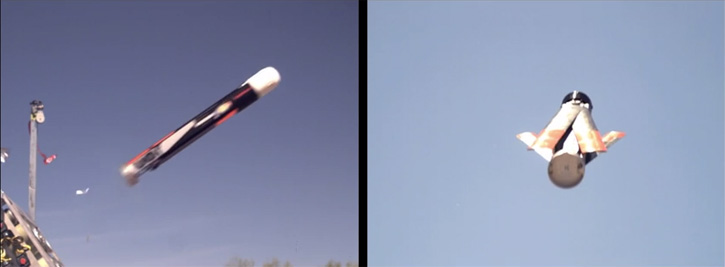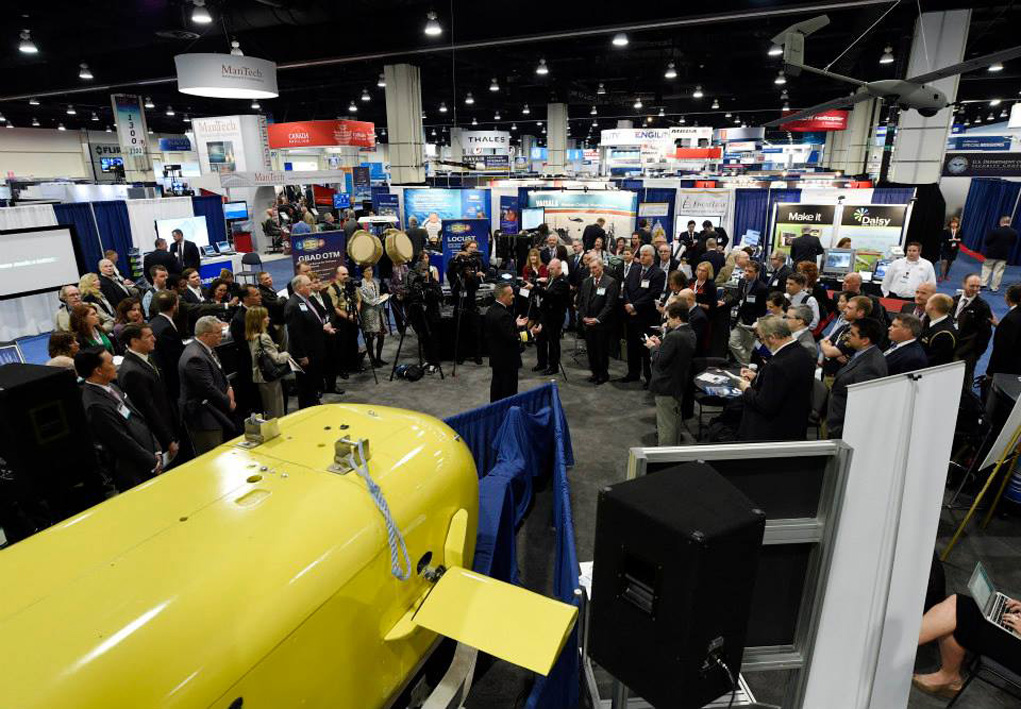The US Navy Office of Naval Research (ONR) completed the first phase of flight testing of swarming unmanned aerial vehicles (UAVs), as part of the Low-Cost UAV Swarming Technology (LOCUST) program.
The ONR demonstrations, which took place over the last month in multiple locations, included the launch of Coyote UAVs capable of carrying varying payloads for different missions. Another technology demonstration of nine UAVs accomplished completely autonomous UAV synchronization and formation flight.

“The recent demonstrations are an important step on the way to the 2016 ship-based demonstration of 30 rapidly launched autonomous, swarming UAVs,” said ONR program manager Lee Mastroianni. According to Navy officials, LOCUST can launch swarming UAVs to autonomously overwhelm an adversary, providing Sailors and Marines a decisive tactical advantage.
LOCUST consists of autonomous, unmanned aerial systems (UAS) launched from a tube-based launcher that can send UAVs into the air in rapid succession. On their mission these mini drones establish a communications network that utilizes information-sharing, enabling autonomous collaborative behavior in either defensive or offensive missions.
Since the launcher and the UAVs themselves have a small footprint, the technology enables swarms of compact UAVs to take off from ships, tactical vehicles, aircraft or other unmanned platforms.
The Coyote UAV developed by Advanced Ceramics Research in 2009 (the company was later acquired by BAE Systems and has recently been acquired by Raytheon). With an electrical propulsion that sustains missions for 90 minutes, Coyote carries an EO/IR payload and data transmitter on intelligence, surveillance, and reconnaissance (ISR) missions. Designed with foldable wings and tail, the tube-launched drone can deploy from standard sonobuoy container on maritime-patrol aircraft or anti-submarine warfare (ASW) helicopters, as well as ground or surface (naval) launchers.
The original Coyote was designed to operate autonomously or interactively, under remote control, using VHF/UHF communications. The drones tested during the recent experiment represent new, autonomous capabilities. ONR officials note that while the LOCUST autonomy is cutting edge compared to remote-controlled UAVs, there will always be a human monitoring the mission, able to step in and take control as desired. “This level of autonomous swarming flight has never been done before,” said Mastroianni. “UAVs that are expendable and reconfigurable will free manned aircraft and traditional weapon systems to do more, and essentially multiply combat power at decreased risk to the warfighter.” At a takeoff weight of 5.9kg (13 pounds) Coyote flies a 60 minute mission, with a payload weighing 0.9 kg (1.9 pounds). Previously the entire weight was required for EO/IR payloads but today, as EO/IR payloads are becoming lighter and more affordable, some of the LOCUST swarm could be fitted with higher performance sensors, acting as ‘sensors’ while others carry less capable but lighter EO/IR payloads and lethal warheads, acting as ‘stingers’.
According to the Chief of Naval Operations Adm. Jonathan Greenert, in 10-15 years “Unmanned systems in the air and water will employ greater autonomy and be fully integrated with their manned counterparts.”
While UAVs and swarms are offering offensive operational advantages, they also represent significant new risks for the protection of our own forces. To address those risks the US Navy is enhancing Ground Based Air Defense (GBAD) with new sensors and high energy lasers. The land-based Ground-Based Air Defense On-the-Move is planned to enhance current systems protecting deployed marine corps forces. GBAD is a vehicle-based, mobile, high-energy laser that is a cost-effective defense against asymmetric threats like UAVs. GBAD’s evolution has mirrored that of other directed-energy programs sponsored by ONR, including the Laser Weapon System (LaWS) that is today operating aboard USS Ponce in the Arabian Gulf. On display at SAS were the Israeli made system’s Multi-mode Hemispherical Radar (MHR), and a model of the systems’ planar waveguide laser. (Continue reading)






















